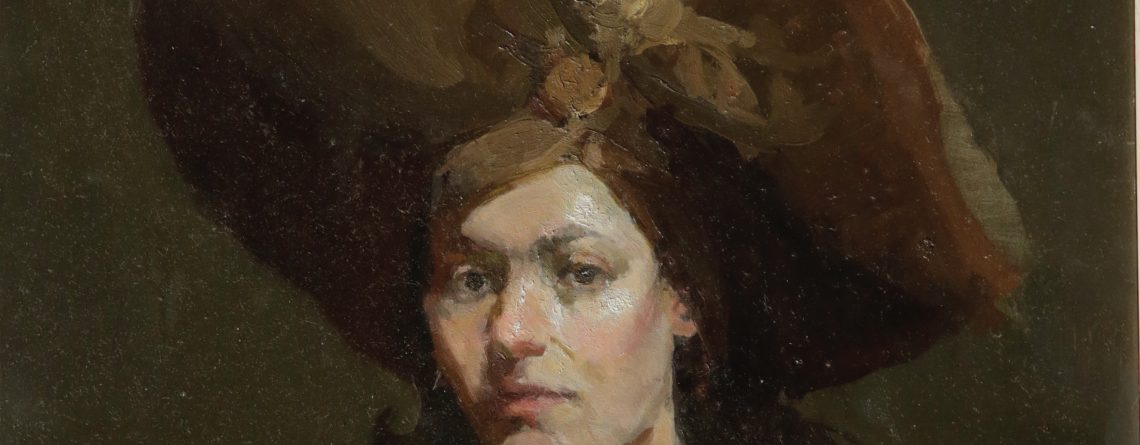From Drawing to Portrait Painting
How important is drawing to portrait painting
I believe that drawing is so important to portrait painting. From my own experience, drawing has improved my portrait painting. The more I draw the better my hand and eye coordination gets. This allows me to become more accurate and direct with my drawing. Plus the more I draw, the more I can see subtleties and understand planes. So drawing helps my painting tremendously. Especially with portraiture where you do have to be more exact. With the skill of painting, I can be confident with the brush. Learning the structure of the face will also help.
The following is a conversation between Jackie Kamin and Sherrie McGraw about how important drawing is to portrait painting.
Join The Artists Guild for Free to Watch the Video

Jackie: Hi Sherrie
Sherrie: Hi Jackie. How are you?
Jackie: How are you?
Sherrie: Good, good, good. So I know today we’re going to talk about the importance of drawing to doing any kind of portrait painting. And so I know you and I have talked about this a lot and the most important thing that drawing does and its relationship to painting. What drawing does is it develops your ability to see form and to understand what it is you’re looking at. With drawing, which is such a simple language, you’re able to discover and understand all of these qualities in nature that you need to have an understanding of the structure and form.
Essentially, you gain a very fine understanding of what you’re looking at. So that when you get into the complexities of oil painting, it isn’t so difficult. And I know you experienced that when you were doing the veterans. I know that you went in there and you were drawing them every day. So that when you did your day in the studio series of painting a veteran, you already had a lot of experience understanding their form and capturing it in paint.
Jackie: Right, right.

Jacqueline Kamin 
Jacqueline Kamin 
Jacqueline Kamin 
Jacqueline Kamin 
Jacqueline Kamin 
Jacqueline Kamin
Avoid the Clichés
Sherrie: I feel that it just heightened your sensitivity to what you’re looking at. It’s just not a cursory look at what you think you know they look like, but it’s really capturing that individual eye, that particular way that the skin folds over the eye ball in a particular way, making each person an individual problem. So that you’re not doing clichés. You’re not drawing clichés. It is that fine tuning of your observation and seeing the symmetry on your subject, seeing the structure of the subject. It’s being able to understand the forms that you’re looking at and be able to discern one form from another. See when one form is overlapping another form. And when you can do that with a very simple language like drawing, when you get into painting it’s much simpler.
I know I had this one favorite model of mine, John Le Bloom. He’s a real mountain man that actually lives in the mountains. And so I’ve done quite a few studies and drawings of him. I’ve done watercolors of him and I did a drawing of him in preparation for a bigger painting that I was working on to put him in that.
Finding Models
Jackie: Right. I think a lot of people shy away from drawing, especially portrait drawing. I think that sometimes it’s hard to find models. Someone that will sit for you, but like Stacy and I did for the two years, we sort of had a captive audience. We went to veterans, some here in LA, and we told them we wanted to draw them and they were willing and excited about us coming every week to draw their portraits. They sat for us and it was a wonderful experience. So if you just look around in your neighborhood, there are people that would love to have their portrait drawn. And it does not need to be a long drawn out experience. It can just be something fun for them and for you as well.
Sherrie: I think that’s a great idea! It was really a brilliant idea to go there. You have all the willing models and it’s so much fun to draw somebody who’s older. It’s just a lot of character in the face. So I hope that helps anybody that’s been tuning in to understand why it’s so important to learn how to draw. The main thing is that you draw to understand what you’re looking at so that then when you get into painting and the complexities of that language, you’re able to navigate that more easily without worrying about whether or not you can get the drawing right. It creates a lot of confidence because you feel that you really understand what you’re looking at.
Jackie : I think that covers it. Thank you, Sherrie!
Sherrie: All right!
Jackie: Bye!
Sherrie: Bye. Bye.


Leave a Reply
You must be logged in to post a comment.